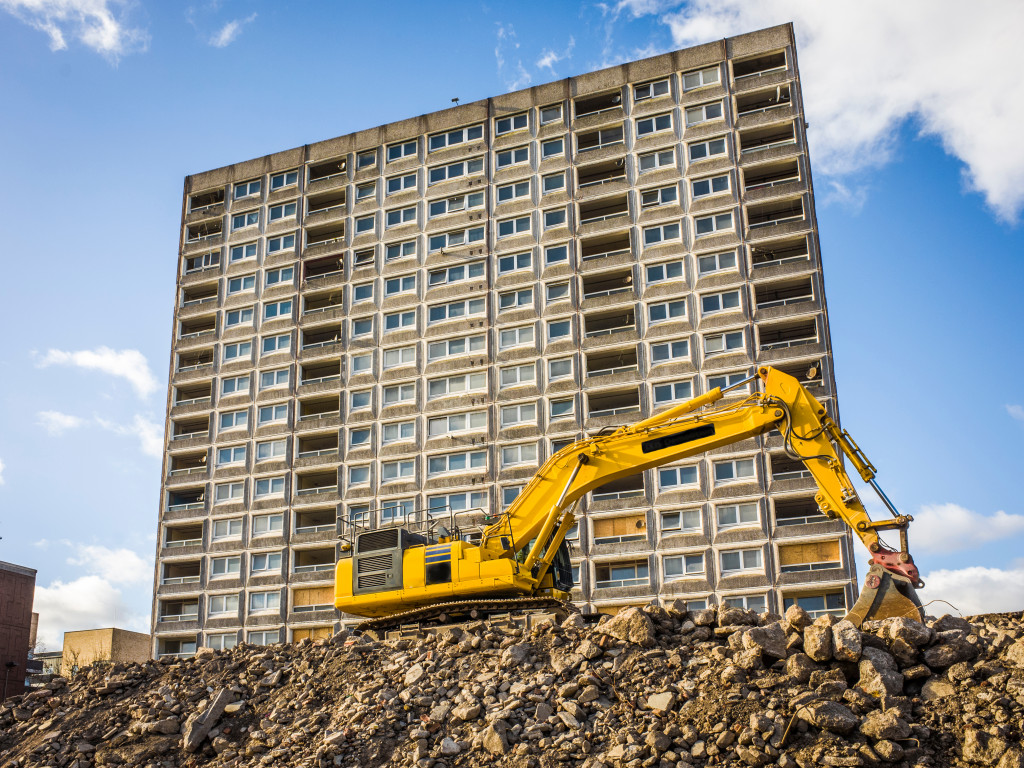Cities and countries are oftentimes recognized by the buildings they have. Some of the most common examples are the Great Wall of China, the statue of Christ the Redeemer in Rio de Janeiro, Brazil, the Empire State Building in New York City, and the recent Burj Khalifa in Dubai.
Having said that, let us look at three important trends in residential and business construction.
Technological Development
The pyramids in Giza, Egypt, are almost five thousand years old. While there are many theories as to how they were built, some as far-fetched as claiming that it was aliens who came from other planets and constructed these massive, triangular-shaped buildings, nobody is quite sure how a civilization with neither the tools nor the knowledge of architecture, structural engineering, and design could create such an amazing example of human accomplishment, one that only grows in wonder over time.
One thing is certain, though, and it is that there is no match for human ingenuity. Whenever people need to do something, they either find a way to do it themselves or create some mechanism to help them achieve their goals. Henry Ford wanted to travel faster than any horse, so he invented the car. But Orville and Wilbur Wright were not satisfied with Ford’s little toy, so they decided to push the envelope, and the first plane came into existence.
In the past two decades, there has been more technological development in the construction industry than all centuries before that combined. Today, real estate enterprises across the globe are working together with heavy industry rental providers and making use of all kinds of light towers, rough terrain cranes, excavators, wheel loaders, and many other tools to bring to life projects that previous civilizations could not have even imagined.
Mega Constructions and Sustainability
For six seasons and more than one hundred episodes, there was a top-rated television show on the National Geographic Channel called Megastructures. The premise was captivating yet very simple. Every Saturday, viewers would take a trip to nations as diverse as the United States, France, Japan, Brazil, and South Africa and explore buildings, bridges, statues, and many other marvelous, gigantic artificial structures. Examples included the USS Ronald Reagan aircraft carrier, Kansai International Airport in Osaka, Japan, The Channel Tunnel between the United Kingdom and France, and the Autobahn, a high-speed interconnecting road system in Germany.
More than twenty years into the 21st century, this concept has expanded both in size and scope. The massive projects of today and tomorrow are not only enormous, but they also have to be convenient, purposeful, environmentally friendly, and sustainable. A smart megacity is worthless if all it does is consume the limited natural resources we have left and pollute the planet. So is a magnetic train that travels at hyperspeed but is costly, uncomfortable, and inefficient.
Luckily, as previously mentioned, mankind now has the technology to develop the necessary tools to build living and working environments that improve our lives without destroying our earth. For instance, concepts like vertical cities and Italian architect Paolo Soleri’s Arcology are now in full effect in countries like Abu Dhabi and Russia and even remote locations such as Antarctica.

Cooperation and Finding a Balance
If you have ever been to either a residential or corporate construction site, you might have noticed there are dozens of people working there. Aside from construction workers and project managers, you will probably find a construction foreman, an electrician, an engineer, a construction expediter, a supervisor, an architect, an expert plumber, and an estimator. For larger projects, there could be two or three of each. Clearly, erecting a condominium, a shopping complex, a sports facility, or an office building is a job that requires collaboration and teamwork.
Currently, this has expanded to not only include the individuals involved in the project but also the machines and mechanisms needed to make this undertaking successful. Some of the most important ones are construction drones, virtual and augmented reality software, building information modeling, remote monitoring, and modular construction methodologies.
As a result, the key is to find a balance between people and systems and use available resources expeditiously and efficiently. Just because we have one hundred different ways to do something or a long list of tools to choose from doesn’t mean we have to use all of them. Instead, we should maximize what we have and bring in other technologies only when deemed necessary.
We have seen three key trends in residential and corporate construction: the constant development of construction technology, size and sustainability in projects, and collaboration between people and the devices, instruments, and aids we have at our disposal. In an overpopulated world with limited resources, they are essential aspects to consider for us and future generations.
